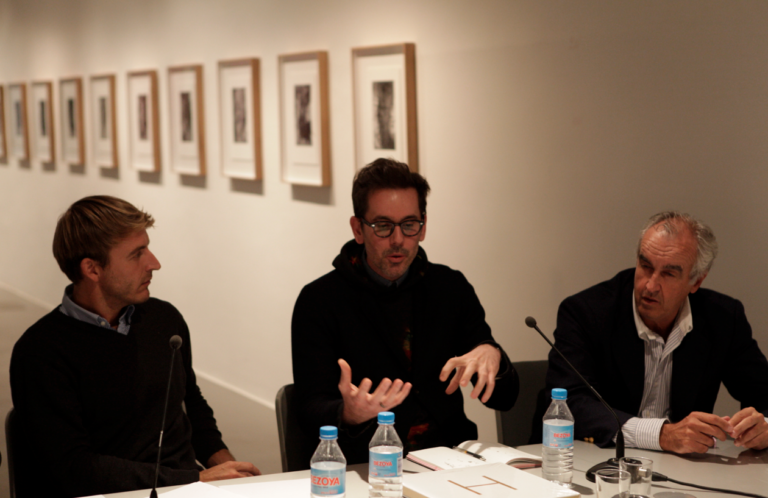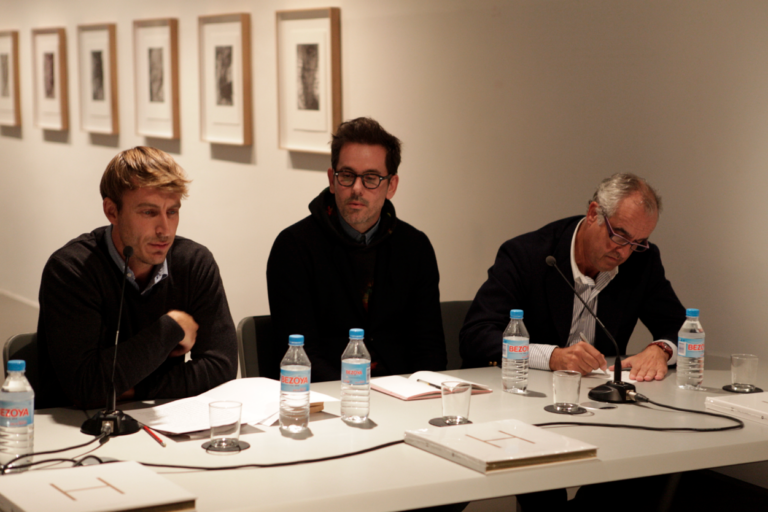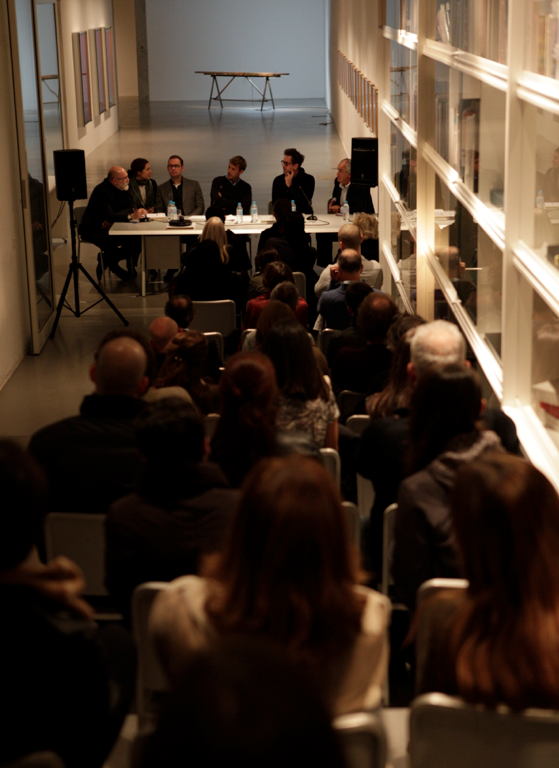Launch of ‘Home’, by Diango Hernández




The studio as a ‘second home’. Cuban artist Diango Hernández (Sancti Spiritus, 1970) presented his latest book, Home, at Ivorypress on 30 November 2011. The publication, produced by dh-artworks and published by Alexander and Bonin Publishing, is an introspective journey into the artist’s studio in Düsseldorf. As the director of Ivorypress Antonio Sanz describes it, ‘this is a intimate, brave book, with no concessions to being commercial’.
Through photos, drawings and excerpts from Diango Hernández’ diary, this book gives details of the artist’s work and of his studio, which ‘do not offer a general idea, but take shape in the reader’s imagination’. Diango Hernández had his own studio to work in for the first time when he moved to Dusseldorf. It resulted from ‘the want for a quiet place where to be isolated from the outside world, silent as the H on the book cover, which is a mute letter’, the artist told during the presentation of Home. In his studio, he collects objects that fascinate him, ‘therefore the space turns into a sort of storage of elements that will help him build up a narration’. This book documents ‘this permanent change in the relationship with objects in interior spaces, a change in which objects begin to transform and gain value’. Dirk Hartmann, director of dh-artworks, a publishing house which specialises in limited editions and artist books, also took part in the presentation. For the German editor, ‘creating a book like this, right from the beginning and through a two-years process, has been a fascinating experience’.
The starting point of the project was the exhibition Diango Hernández had at the Tate Liverpool, when the artist opened his studio to Hartmann, a location of which he speaks of as ‘a private place, a sort of second home’, which consequently turned into the title of the book. During the presentation, writer and art critic Javier García Montes highlighted the connections between this publication and 20th century Latin-American literature. García Montes stated that the texts achieve to ‘unveil the seeds of the universal in everyday life and how the everyday is political’. The critic also explained the methodology with which Hernández approaches his artistic practice, as is clearly reflected in the book. The artist fills his studio with found objects and furniture, he ‘collects old things and gives them a second chance’.
Art dealer Pepe Cobo, who has known Diango Hernández through many years of working together, joined the presentation, narrating to the audience the Cuban artist’s career over the past years. ‘Meeting such an artist meant developing a great complicity’. His project Palabras, presented with Pepe Cobo’s gallery at ARCO Project Rooms, was the catalyst of a career path that led to great opportunities such as his participation in Aperto, during the Venice Biennale in 2005. In addition to hosting the presentation of Home, Ivorypress Bookshop exhibited and sold a unique selection of polaroids, drawings and small sculptures by Diango Hernández. The artworks of the Europe-based Cuban artist, whose pieces are born from the ‘false reality’ he himself creates, were on show until the end of February 2011.
